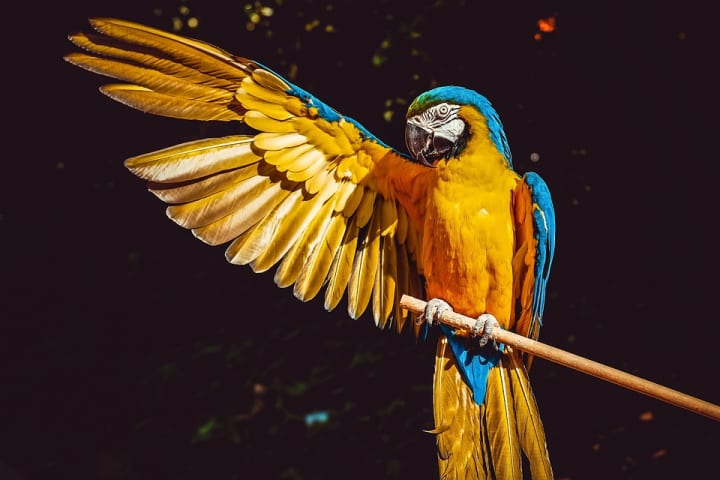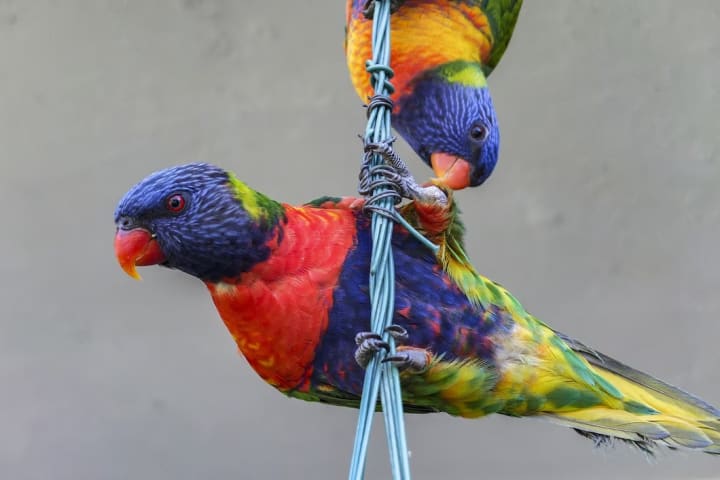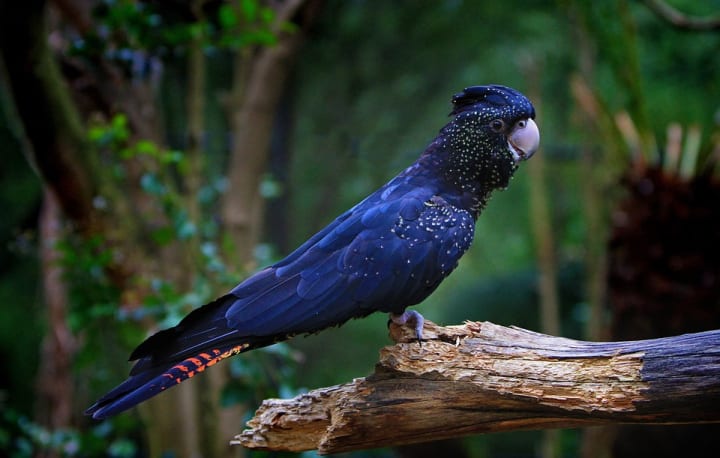The Colorful World of Exotic Birds
Introduction:

The world of exotic birds is one of the most colorful and fascinating places on earth. From the tiny hummingbird to the majestic macaw, these birds are prized for their bright colors, unique patterns, and extraordinary plumage. In this article, we'll explore the colorful world of exotic birds, their habitats, behaviors, and the challenges they face.
The Importance of Exotic Birds:

Exotic birds are not only beautiful, but they also play a vital role in maintaining the balance of nature. Many species of birds are essential pollinators, seed dispersers, and insect controllers, helping to maintain the health of ecosystems. Additionally, they are a critical food source for many other animals, including humans.
Habitats of Exotic Birds:

Exotic birds are found all over the world, from the dense rainforests of South America to the deserts of Africa. Each species has specific habitat requirements, which can range from moist tropical forests to arid grasslands. Some species, such as the African Grey Parrot, can adapt to a variety of habitats, while others, like the Scarlet Macaw, are found only in specific regions.
The Behavior of Exotic Birds:

Exotic birds are known for their complex social behaviors, which can include mating rituals, flocking, and communication through vocalizations and body language. Many species of birds are monogamous, forming lifelong pair bonds, while others engage in polygamous mating systems.
Some birds, such as the African Grey Parrot, are highly intelligent and capable of mimicking human speech and learning complex tasks. They also have strong memories and can form deep emotional bonds with their human caretakers.
The Colorful World of Exotic Birds:

One of the most striking features of exotic birds is their colorful plumage. From the bright blue of the Hyacinth Macaw to the vibrant green and red of the Scarlet Macaw, these birds are a feast for the eyes. The colors of exotic birds are produced by a variety of pigments, including carotenoids, melanin, and structural colors.
Carotenoids are organic pigments found in plants and algae that are consumed by birds in their diets. These pigments are responsible for the red, orange, and yellow colors seen in many species, including the Sun Conure and the Eclectus Parrot.
Melanins are the pigments responsible for black, brown, and gray colors. These pigments are found in the feathers of many species, including the African Grey Parrot and the Toco Toucan.
Structural colors are created by the way light interacts with the microscopic structure of the feathers. These colors are seen in many species, including the Rainbow Lorikeet and the Gouldian Finch.
Some species of birds, such as the male Peafowl, have evolved elaborate plumage displays for courtship and mating purposes. These displays can include brightly colored feathers, iridescent patterns, and ornate tail feathers.
Challenges Facing Exotic Birds:

Despite their importance, exotic birds face numerous challenges, including habitat loss, poaching, and the illegal pet trade. Many species are threatened with extinction due to deforestation, mining, and agriculture, which destroy their habitats and disrupt their food sources.
Poaching and the illegal pet trade are also significant threats to exotic bird populations. Many species are captured and sold illegally for the pet trade, where they are often kept in inadequate conditions and suffer from stress and disease.
Conservation Efforts:

To protect exotic birds, conservation efforts are underway around the world. These efforts include habitat restoration, captive breeding programs, and public education initiatives to raise awareness about the importance of these birds.
Many organizations, such as the World Parrot Trust and the Rainforest Trust, work to protect exotic bird populations by preserving their habitats and conducting research on their behaviors and conservation needs. These organizations also work with local communities to develop sustainable practices that benefit both people and birds.
Captive breeding programs are another important conservation tool. These programs involve breeding endangered species in captivity and releasing them back into the wild to increase their population numbers. However, captive breeding can be challenging, as it requires expertise in animal care and genetic management.
Public education initiatives are also crucial in protecting exotic birds. By raising awareness about the importance of these birds and the threats they face, people can become more informed and involved in conservation efforts. Many zoos and aviaries also provide educational programs that allow visitors to learn about exotic birds and their conservation needs.
Conclusion:
The colorful world of exotic birds is a fascinating and important part of our natural world. These birds play vital roles in maintaining the balance of ecosystems, and their beauty inspires awe and wonder in people around the globe. However, they face numerous threats, including habitat loss, poaching, and the illegal pet trade.
Conservation efforts are critical to protecting these birds and their habitats. By supporting organizations that work to preserve exotic bird populations and educating ourselves and others about their importance, we can help ensure that these magnificent creatures will continue to brighten our world for generations to come.
About the Creator
RS Creation
Search makes a person perfect, and in today's modern technology world, new information is learned through search.
He is created as a man. I am happy to share with you the many information that I have read and learned through my search.






Comments
There are no comments for this story
Be the first to respond and start the conversation.